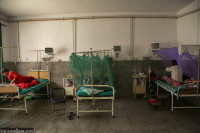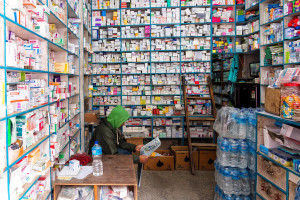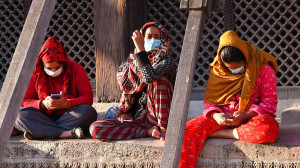Health
Time to rethink blanket vitamin and nutritional campaigns, experts say
Nine years without a micronutrient survey, Nepal still spends millions on vitamin A and mineral drives.
Arjun Poudel
The Micronutrient Survey carried out in 2016 had shown moderate levels of vitamin A deficiency in Nepal. It has been almost a decade since the government started nationwide vitamin A supplementation drives twice a year.
Had the planned micronutrient survey not been suspended indefinitely, Nepal would not have needed to launch a nationwide high-dose vitamin A campaign, which costs over Rs100 million every year.
Officials say the World Health Organisation also does not recommend a high-dose vitamin A campaign if two consecutive nationwide micronutrient surveys show only moderate levels of deficiency.
“The UN health body recommends prioritising and strengthening routine programmes and targeted responses in high-risk areas and groups if problems were found to be moderate in two studies,” said Lila Bikram Thapa, chief of Nutrition Section at the Family Welfare Division under the Department of Health Services. “We have to continue the high-dose vitamin A supplementation programme, as we are unaware of the latest vitamin A deficiency situation in our population.”
Along with the vitamin A supplementation programme, several other health initiatives—including high-dose iodine fortification of salt, and supplementation with iron, acid and zinc, and other nutrition programmes—have been continuing for decades.
Health officials say that due to the lack of latest and credible data from independent institutions, the government is compelled to continue those programmes without knowing the current magnitude of the public health problems they are meant to address.
“The micronutrition study survey, which was planned for April-May, has been suspended indefinitely due to a suspension of the budget by the USAID,” said Thapa. “All necessary preparations—including selection of an independent agency for study, ethical approval from the concerned agencies, and training for enumerators—had been completed, but the study could not happen due to the budget freeze.”
Health experts say that many health issues may no longer require nationwide or blanket programmes, as such approaches cost huge amounts of money and can even have negative effects on public health.
The fortification of salt with iodine beyond WHO recommendations is one such programme that experts say needs reassessment. Nepalis have been using salt with 50ppm (parts per million) of iodine per kilo, which is higher than the recommended level. The UN health body recommends iodine concentration in salt between 15 and 40 ppm per kilo.
The higher iodine level was mandated in the 1990s under the assumption that transport and storage times were longer, as salt had to be carried on the backs of men and animals, and some iodine would dissipate before reaching the market. However, with roads now reaching almost all corners of the country, transport times have reduced considerably, and there is no longer a need for such a high level of iodine in salt, according to doctors.
Several studies—including the 2016 Nepal National Micronutrient Status Survey jointly carried out by the WHO, UNICEF, the US-based Centres for Disease Control and Prevention, and the Ministry of Health and Population—have found that over two thirds—68 percent—of the population across Nepal consumes iodine in excess of the recommended level.
Doctors suspect use of excessive levels of iodine in salt could be among the reasons for the rise in several non-communicable diseases including hypertension and hypothyroidism, renal problems and others.
The Global Burden of Disease 2021 showed that non-communicable diseases are responsible for 73 percent of total deaths, and the ratio could be even higher now, experts say.
“We had planned to decide whether to lower iodine content in salt after reviewing new findings from the micronutrient survey,” said Thapa. “Without strong evidence, a new decision that affects the entire population cannot be taken.”
Public health experts say they doubt if several ongoing healthcare programmes—including the nationwide vitamin campaigns twice a year, high levels of iodine fortification in salt, and iron-folic acid supplementation for all—are still necessary.
“Due to improved dietary habits, increase in family income, not all children may need vitamin A supplementation,” said Dr Yasho Vardan Pradhan, former director general at the Department of Health Services. “It has been years since goiter problems vanished from the country. So, we may no longer need such high doses of iodine fortification.”
An indefinite halt in health surveys and data collection has left the country in the dark about updated health indicators and has hindered efforts to track progress towards Sustainable Development Goals (SDGs) targets, experts warn.
SDGs, a follow-up on the Millennium Development Goals (MDGs), aim to end poverty and hunger and all forms of inequality in the world by 2030, and Nepal has committed to meeting the goals.
They say time has come to start a serious discussion about the need and effectiveness of several ongoing health programmes. They also warn that continuing such programmes without assessment and review does not yield desired results and only wastes resources and time.
“A huge budget is required to carry out large-scale studies by independent and credible agencies,” said Thapa. “We neither have our own budget for such a study nor have we found any agency willing to fund it.”




 10.12°C Kathmandu
10.12°C Kathmandu












%20(1).jpg&w=300&height=200)

